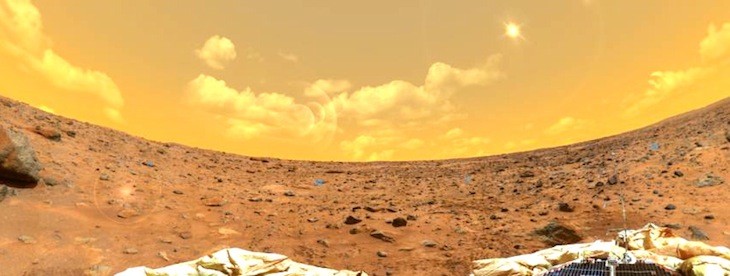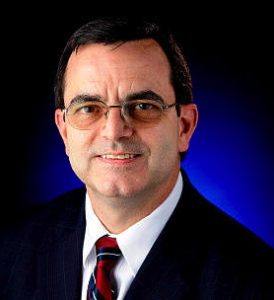Top NASA medical officer to address osteopathic convention in Fort Smith
by April 30, 2017 7:40 pm 647 views

Human limits interest Dr. James Polk. He was part of the team that helped rescue the 33 Chilean miners trapped below ground for more than 10 weeks. He’s also the top NASA medical officer working to ensure astronaut safety on the planned trip to Mars.
Dr. Polk, chief health and medical officer with the National Aeronautics and Space Administration, will be in Fort Smith on June 17 to deliver the keynote address at the Arkansas Osteopathic Convention. The 32nd annual convention of the state’s osteopathic (DO) doctors is set to be held at the newly opened Arkansas College of Osteopathic Medicine.
“There is no more fitting way to celebrate the new horizon of the osteopathic profession in the state than by bringing in Dr. Polk, who cultivates the application of medicine into an industry that yields innovation and inspiration through space exploration,” Arkansas Osteopathic Medical Association (AOMA) Executive Director Frazier Edward said in a statement. “It will truly be a unique opportunity to hear such a pioneering talk about the first manned flight to Mars in ARCOM’s, new and state-of-the-art facility.”
The college is part of the Arkansas Colleges of Health Education (ACHE), created with primary support from The Degen Foundation, a Fort Smith-based philanthropy created with some of the revenue from the 2009 sale of Sparks Health System to then Naples, Fla.-based Health Management Associates. Work began in February 2015 on the $32.4 million facility in east Fort Smith in the Chaffee Crossing area. The school is housed in the three story, 102,000-square-foot building, and a fully operational osteopathic college is expected to serve about 600 students. Each class will have 150 students. The first class of students is set to arrive July 31 for orientation.
POLK BACKGROUND, JOB FOCUS
Polk is the former dean of Medicine for Des Moines University’s College of Osteopathic Medicine. He was the Assistant Secretary (Acting) for Health Affairs and Chief Medical Officer of the U.S. Department of Homeland Security (DHS), assuming this post after serving as the Principal Deputy Assistant Secretary for Health Affairs and Deputy Chief Medical Officer. Before coming to DHS, Polk was the chief of space medicine for NASA’s Johnson Space Center in Houston. Polk is a Fellow of the American College of Osteopathic Emergency Physicians, and an Associate Fellow of the Aerospace Medicine Association.

Polk received his degree in Osteopathic Medicine from the A.T. Still University in Kirksville, Mo. He completed his residency in emergency medicine with Mt. Sinai hospitals via Ohio University and completed his training in aerospace medicine at the University of Texas Medical Branch. He is board certified in both emergency medicine and aerospace medicine. Polk also holds a master’s degree in science in space studies from the American Military University.
Polk was one of four members of a NASA team to travel to Chile in August 2010 to help rescue 33 miners trapped more than 2,300 feet underground.
“A lot of the things that we used from space flight were applicable to this situation that we never would have dreamed of. It probably works that way in reverse as well, that there are lessons learned and things that they learned – from the physiologic standpoint, medical standpoint, psychological standpoint, leadership development, business-type lessons, innovation lessons, not just necessarily things that live in the medical house – that might be applicable back to our space flight,” Polk noted in a lengthy oral history about his involvement in the rescue.
A primary part of Polk’s role with the Mars mission is to ensure the astronauts are capable of taking care of most medical emergencies. There will be a time delay between NASA and astronauts traveling to Mars. Waiting for a response from a flight surgeon on Earth may not always be feasible.
“The crew can’t just come home whenever they want. We need to ensure the astronauts are trained to deal with routine medical care as well as emergency medical issues when they embark on exploration missions,” Polk said in this interview with The DO website.
NASA plans to send humans to Mars in “the early 2030s.”
“Mars is the next tangible frontier for human exploration, and it’s an achievable goal. There are challenges to pioneering Mars, but we know they are solvable. We are well on our way to getting there, landing there, and living there,” according to NASA.
AOMA President Dr. Gary Edwards said he hopes Polk’s background will prove motivational to those who attend the convention.
“It is my hope that attendees will benefit from the insights of such a trailblazer in Dr. Polk. This conference should provide equal parts inspiration and motivation; an invitation for osteopathic physicians to take hold of our state’s healthcare needs and help train its future physician workforce, thereby seizing the power of possibility and changing the lives of our patients for the better.”
